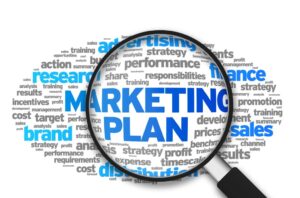Learning how to write effective ads is a skill and talent that will make a significant difference to your marketing campaigns and results.
One good ad can make the difference between having a campaign that is a roaring success which generates leads, subscribers, and sales, or a campaign that does nothing except lose you money.
There is a science behind writing effective ads, and once you learn it you’ll start to see better results and ROI from your marketing campaigns.
In his excellent book “How to Write a Good Advertisement” Victor O. Schwab outlines 5 key elements of a successful ad.
Click here to read my review of the book
Every ad should do 5 things:
- It should grab attention
- It should propose an advantage or opportunity
- It should prove the advantage or opportunity
- It should persuade your prospect to grasp the advantage or opportunity
- It should encourage them to take action
Every ad you create should contain all 5 of these elements in order to be successful. When your ads contain all 5 of these elements they’ll be much more effective at taking your prospect from reading your ad to following through on your call-to-action.
Let’s have a look at each one in order.
1. Grab attention
The first purpose of any ad is to grab the attention of your target audience. You can write the best ad copy in the world but it’s no use if nobody actually reads it.
In today’s busy world where advertisers are competing for the attention of consumers, people are increasingly suffering from “ad blindness” due to overexposure to ads. If you want to be heard above the noise you need to make sure that your ad gets noticed and read by those people whom you are targeting.
How do you do this?
In order to get people reading your ad you need to grab their attention – and you grab their attention with your headline. The headline of an ad has one purpose – to get the reader to start reading the main copy of your ad.
To be successful in achieving this your headline has to:
(a.) Grab the attention of those who are (or can be induced to be) interested in the subject of the ad (your product or service)
(b.) Promise them a “reward for reading” the rest of your ad.
(a.) How to create an attention-grabbing headline?
There are a few elements that grab attention more than others. When you include these in your headlines you should start to see an uplift in the result you get.
Ask a question
Asking a question that elicits a “yes” response is a great way to grab attention and draw people further in to your ad copy.
- Would you like to…………?
- Have you ever wanted to……………?
- Are you fed up of……………?
Arouse curiosity
Using curiosity in your headlines is a great way to grab attention and make people eager to read the rest of your ad copy.
If your headline makes someone ask “What it is?” or “How do they do that?” then you have successfully aroused their curiosity enough to make them want to read the rest of your ad.
Be specific
Being specific in your headlines is a proven way to increase readership.
Instead of making generic claims or statements, try and be specific by stating how, what, why, and when. Using numbers or exact amounts is another great way of being specific.
Example: “Learn how to increase your finances” vs “Learn how to increase your finances in 3 easy steps with these stock trading secrets.”
The 2nd headline is much more effective because it is specific – it clearly states “what” and “how”. Being specific also allows you to filter out anyone who doesn’t have any interest in your product or service and likely never will have.
There are many things you can do to make your headlines stand out and grab the attention of your readers. For more tips on headline creation check out our posts “How to write catchy headlines – fast!” and “6 secrets to creating effective online ads”
(b.) Promise them a reward for reading the rest of your ad
What sort of rewards can your headline promise them for reading your ad?
There are two main approaches that you can take when it comes to creating headlines that offer your reader a reward if they read your ad copy, the positive approach and the negative approach.
Positive approach
These headlines offer your reader the promise of being able to save, increase, gain, or accomplish something through the use of your product
In other words, they offer the promise of being able to increase their mental, physical, emotional, spiritual, financial, or social well-being, security, and status.
Negative approach
These headlines outline how your reader can reduce or avoid risk, loss, worry, struggle, pain, mistakes, embarrassment, failure, or any other undesirable condition through the use of your product.
The negative approach is concerned with how to decrease their discomfort, fears, boredom, failures, or anything that lowers their standard of living, or social status.
You should test both approaches and see which one your target audience responds more favorably to. There will be some people who respond more favorably to the positive approach, and some who will be more favorable to the negative approach.
2. Show people an advantage or opportunity
When someone reads your ad the only thing they are really concerned about is “What’s in it for me?” What is your product or service going to do for them? How is it going to benefit them?
The body of your ad copy should tell them how they will get an advantage by using your product or service. You may have alluded to this advantage in your headline, but this is where you go into more detail.
As mentioned above, your prospects either want to increase something (money, status, health, happiness, relationships, etc) or decrease something (fear, worry, poverty, pain, loss, risk, embarrassment, etc).
This is where having a thorough understanding of your target audience will pay dividends. You need to really understand your target market well in order to demonstrate how your product or service will benefit them, by either increasing the things they want or decreasing the things they don’t.
Use words and terminology that they use and understand in order to establish rapport with them. Demonstrate that you understand their current situation and that you know where they want to go and what results they are looking for. Then proceed to tell them how your product or service will deliver them these results.
3. Prove your claims
When you have stated how your product will give your prospect an advantage or the results they desire, you have to prove it to them. You’ve made your claims, now you have to back these claims up. You can accomplish this by using testimonials from satisfied customers.
If you have a customer that has experienced success and has achieved the results your product promised them, you should use that story in your ad copy.
Stories are an effective tool for selling, and when you can tell the story of someone who achieved the results you promised you will be harnessing the powerful principle of social proof.
Social proof is one of the key principles of persuasion and will give you instant credibility amongst your prospects if used effectively. One of the most powerful forms of social proof is the success stories of your satisfied customers. These stories can help nudge other prospects into making a buying decision.
Where possible (depending on the nature of your product) use facts or other forms of data to prove your claims. Has your product undergone any tests? How does it stack up against competitors? Having authorities, respected individuals, or influencers in your market back up your claims also acts as powerful social proof.
When you can demonstrate the validity of your claims you will have removed doubt – which is one of the main barriers in the mind of your prospect when it comes to getting them to make a buying decision.
4. Persuade them to grab the advantage or opportunity
So far your advert has grabbed their attention, showed them an advantage, and proven that advantage. Now you want to persuade them of the importance of grasping that advantage.
They’ve read about other customers successfully using your product and how it has benefitted them, now you need to make it easy for them to see themselves in possession of your product and enjoying the results. To do this you have to paint a picture of your prospect already using your product and enjoying the advantage or result it gives them.
You do this by focusing on the emotions they will feel when they achieve the end goal. Talk about what will happen when they buy and use your product. How will it make them feel once they have achieved the result or advantage they so badly crave?
How will their life be better? What does this better life look and feel like? Use words that are descriptive and which elicit emotions to create a mental picture in their mind of what their life will be like once they use your product.
You want them to be able to visualise themselves as enjoying the benefits now. You can talk about the positives they will experience if they grasp the advantage or opportunity you are offering, and how this will improve their quality of life, status, wealth, etc.
You can also talk about the negatives that may occur if they don’t take action and buy your product. When talking about the negatives you want to talk about how dissatisfied they will feel when nothing changes and things remain the same as a result of not grasping the advantage you are offering.
Remember – your prospect is in some sort of pain and can benefit from the advantage that your product offers. They want change. When you paint the picture of nothing changing as a result of them not taking action, you are highlighting their current situation and reminding them how much they want to change it.
5. Inspire them to take action now
So you’ve managed to grab your prospect’s attention and got them to read your ad, you’ve introduced the advantage your product offers, you’ve proven that advantage, and you’ve demonstrated the importance of your advantage by showing them what will/will not happen if they buy/don’t buy your product.
Now you need to ask them to take specific action.
There are so many ads out there that contain all 4 of the elements we’ve covered so far, yet they leave out arguably the most important one – which is to ask them to take action! That’s the equivalent of making a sales call, getting an appointment, going to that appointment and making your sales presentation, and then walking straight out the door without asking for the sale.
All that hard work for nothing. If your prospect has read your ad copy and is still with you up to this stage then it means they’re interested, so now is the time to ask them to take action. Your call-to-action can be to make a purchase, subscribe to your email list, download a free report or e-book, or sign up for a webinar – whatever it is you must ask them to take the action.
Never assume that your reader will instinctively know what to do after reading your advert. You have to make it clear, simple, and easy for them. There are several techniques and tricks you can use to make your call-to-actions more effective. These include:
Simplicity – only ask them to take one action
Make your call-to-action simple to follow by only asking them to do one action.
Don’t try to ask them to do more than one action or they may end up doing nothing. Every time you ask someone to take a specific action you are asking for a commitment.
If you ask for too much commitment by asking them to do more than one thing they may end up doing nothing, and you may have lost that prospective customer forever. Don’t ask for too much. Make it easy for them to act by only giving them one action to do.
Scarcity
Create a sense of scarcity by creating a limited offer or promotion e.g. “half price for the first 100 buyers”, or “only 100 available”. Things that are limited or scarce have a perception of increased value – we value something more if it is rare or limited in numbers and availability.
Scarcity triggers the “fear of missing out” (FOMO), which is a powerful motivator that can spur your prospects into taking action on your offer.
Offer free shipping
If you sell physical products you can increase your sales by offering free shipping.
If you can’t afford to offer free shipping then incorporate the shipping price into the price of the product. That way your shipping costs are covered, and you can still use the “free shipping” offer.
Urgency
Create a sense of urgency by offering limited-time offers such as 24hr sales, or by offering them a special one-time bonus or discount if they buy now.
Scarcity and urgency work very well together and can be combined by creating offers that are limited in number and are only available for a limited time.
Guarantees
Get people to take action on your offer by eliminating the risk involved in purchasing your product.
Money-back guarantees are an excellent way to remove the doubts, risks, and fears involved in making a buying decision. When you offer a guarantee you make it easy for your prospect to say “yes” to your offer, and allow them to take action without any sense of buyer’s remorse or guilt.
Free-Trials
Offering free trials of your product or service is another great way to encourage your prospects to take action. By allowing them to use your product for free without any sort of upfront payment, you take all the risk away and make it an easy decision for them.
They can try your product and see the benefits for themselves without losing any money or making a decision they’ll later regret. If they like your product they’ll end up buying.
If they don’t end up buying you will have captured their contact information which allows you to put them into a lead nurture program where you can re-target and follow up with them at a later date.
Conclusion
So there you have the five purposes of an ad and the elements that all good ads should contain.
As you can see they follow a logical progression through the sales cycle and adhere closely to the principles of the AIDA model – attention, interest, desire, action.
When you start structuring your ad copy in this way you will start to see an improvement in their performance. Don’t forget to test and tweak the different elements and make them suitable for your target audience, product, and market.
For more tips on how to write effective ads and sales copy, check out my review on the best copywriting books every marketer should read.]




